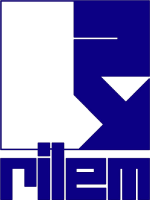Technical Committee
General Information
Subject matter
Rather than a refuge from air pollution, indoor environments contain a multitude of pollutants that we have to face over 80% of our time. Indoor air is an important vector of pathogens – cocktails of chemicals, particulates and bio-aerosols – which impact health, comfort and productivity. The sources of pollution are various, coming mainly from the building itself (materials, decorative products, furniture), outdoor, plants, animals or human activities. The health consequences of such exposure depend on the nature of the pollutants, the intensity and duration of exposure, as well as on genetic determinants and socio-economic factors. Moreover, the importance of reducing energy consumption, which has led to more insulated buildings with reduced “fresh” air volume, raises the question of the impact of increased airtightness on indoor air quality (IAQ). Similarly, the increasing use of materials with low environmental impact, such as bio- or geo-sourced materials and recycled-content materials, can lead to chemical emissions and microorganism proliferations on surfaces, thus negatively affecting IAQ. In a context where energy savings in buildings, eco-friendly materials and occupant well-being are of utmost importance, this TC RILEM will aim to compile information on IAQ from the point of view of materials/pollutants interaction and ventilation systems/pollutants interaction. Technologies to mitigate indoor air pollution, methods to assess indoor air pollution and emissions form materials will notably be discussed.
This TC will focus on four main topics in order to collect qualitative and quantitative data:
Topic 1: State of the art of sources of indoor air pollution, nature of pollutants, pollution levels, guidelines and objectives (depending on country and building type).
1.1 The causes of poor IAQ will be investigated and the predominant indoor pollutants identified:
- Building materials, decorative products and furniture are indoor sources of pollution due to their rather strong emissions of volatile organic compounds (VOCs) and large surface area.
- Building dampness may lead to the proliferation of various types of microorganisms, including fungi and bacteria on indoor material surfaces.
- Occupants generate and transport bio-aerosols associated with human diseases and symptoms.
- Outdoor pollutants infiltrate buildings and impact IAQ (urban area, farming, proximity to industrial sites, etc.).
1.2 The level of pollution in buildings will be presented and compared to the guideline values:
- Guidelines values are established for some pollutants in order to avoid adverse effects on human health. They are set by the World Health Organization or national authorities.
- Current ventilation standards set minimum ventilation rates to mitigate the risks of occupant discomfort, reduce energy costs and the environmental impact of buildings.
- The level of pollution is dependent of the type of buildings: houses, schools, offices, etc., but also on the localization. A correlation between pollution, ventilation systems, building materials and building site can be established.
1.3 Future IAQ objectives and the means to achieve them will be discussed, as examples:
- Minimize occupant exposure to chemical, physical and biological pollutants.
- Design and allow proper air exchange.
- Control moisture in the indoor air.
- Monitor the air quality/comfort within a building: the level of pollutants and CO2, the moisture in the indoor air, the thermal performance.
Topic 2: Methods to assess indoor air pollution.
The techniques and experimental protocols used to measure the concentration of the most representative indoor pollutants will be discussed. A distinction will be made between the methods used at a laboratory scale and those used in situ. Chemical, biological and physical pollutants are concerned. This topic will mainly focus on:
- Exiting standards -> In order to enable a monitoring of IAQ, standards for measurement methods exist for several pollutants of interest. What are these methods (direct/indirect measurement)? What analytical instruments are used? What are their advantages? Drawbacks?
- Gas sensors -> Standard methods may not be suitable for long-term and real-time monitoring of indoor air. A promising alternative resides in using gas sensors, which are miniature and low-cost devices capable to detect air pollutants, even at low concentrations, by changing their physical properties. What are the performance of gas sensors? How to improve their selectivity and sensitivity? In addition, since gas sensors enable real-time monitoring of the concentration of pollutants, it would be possible to assess the effectiveness of air treatment techniques or trigger corrective actions in the event of IAQ deterioration, on a daily basis.
- Measurement campaigns -> They aim to collect data on indoor pollutants (chemical, biological and physical) in different living spaces. What are the in situ measurement procedures (duration, number of samplings, number of rooms studied in a building, time when the air is sampled (seasons, time of the day), etc.)? Which pollutants (chemical, biological, physical) are mainly investigated? Which data are missing? Which building parameters should be measured as part of an IAQ campaign? Any feedback on field measurement campaigns carried out with gas sensors?
- Design of experimental procedure to obtain results representative of indoor conditions. Discussion of test benches available at laboratories/industries for carrying out experiments under realistic indoor conditions (assessment of technologies to mitigate indoor air pollution (Topic 3) and emission form building materials (Topic 4), evaluation of the performance of gas sensors, etc.).
Topic 3: Technologies to mitigate indoor air pollution.
To improve IAQ in buildings, the reduction of pollutant sources and the use of an efficient ventilation system are basic strategies. However, these actions are in some cases inefficient and/or insufficient to decrease the level of indoor pollution. Air treatment methods are therefore necessary. This topic will focus on passive removal techniques and innovations on building physics (ventilation, insulation systems) aimed at improving IAQ, as well as the research outcomes obtained in these areas.
3.1 Adsorption -> Solid substance can effectively adsorb (chemisorption or physical adsorption) and remove pollutants (gases or liquids) due to their large surface area, appropriate pore structure and rich surface chemistry. The best known traditional adsorbents are activated carbon and zeolite, which can be loaded with different materials. More recently, metal-organic framework materials (MOFs, porous 3D crystalline skeleton framework materials formed by self-assembly of organic ligands and metal ions) have attracted growing interest for environmental applications (pollution mitigation) due to their large specific surface area and pore volume. What are the effects of key controlling parameters (environmental and operational parameters) on the adsorption capacity? What are the efficiency, selectivity, stability and regeneration capacity of these materials? How to improve their performance? In general, the adsorption capacity of any biomass-derived materials will be discussed.
3.2 Photocatalysis -> Photocatalytic oxidation has received considerable attention regarding its potential global action on pollutants. This technique, which only needs three components – a catalyst (semiconductor), an emitted photon (artificial or solar light) and a strong oxidizing agent (oxygen) – is based on the generation of reactive oxygen species, which have the potential to decompose or mineralize a wide range of pollutants in air and water. Efforts have been made to improve this process and assess its efficiency for air treatment (e.g. design of advanced photocatalysts and efficient reactors). However, photocatalysis for the indoor environment is a tricky topic as some challenges remain. In particular, this technique raises questions about the formation of harmful by-products, long-term efficiency and the release of nanoparticles into the air, which need to be addressed.
3.3 Building physics - > The building envelope should be the first line of defense against IAQ problems. However, if not properly designed and installed, mold can growth on building components and affect their longevity and the IAQ of a building. Strategies for improving IAQ from the perspective of building envelope design and ventilation/air filtration systems will be discussed. The use of portable air cleaners and the exploitation of smart technologies and sensing systems, which incorporate algorithms that optimize IAQ, could also be included in the discussion.
3.4 Other techniques -> Biofiltration?
Topic 4: Emissions from materials/products
Construction and furnishing materials make an important contribution to the concentration of a wide range of VOCs in the indoor air. However, the correlation between VOCs concentrations measured indoor and information provided by emission tests using chambers is complex to define as various factors came into play (microenvironment of the material, outdoor pollution, ventilation, adsorption/absorption, seasonal variations, secondary formation of gaseous pollutants, etc.).
4.1 Review of VOC emissions from building materials and methods for assessing these emissions at laboratory scale and in situ. Are in situ emissions comparable to laboratory emissions? Contribution of surface emission sources to VOC concentrations in indoor air (influence of outdoor ozone, domination of surface or gas-phase emission sources in indoor air, etc.)? What are the effects of environmental parameters (temperature and humidity) on material emissions? Interactions between pollutants?
4.2 Formation of by-products due to photocatalytic oxidation -> This kind of technique raises the question of the formation of pollutants that are more harmful to health that those indented to be degraded. Under what conditions are these by-products formed? How can they be characterized and quantified?
4.3 Specific focus on bio-based and recycled material -> Biosourced and recycled materials are strongly encouraged in buildings in order to limit the carbon footprint. However, their chemical emissions are not clearly characterized and compared with their equivalents containing little or no recycled/biosourced materials. This lack of data therefore needs to be filled in order to identify the health impact of these materials, in the same way as their carbon footprint, especially as they may be more subject to the proliferation of micro-organisms and therefore to emissions of VOCs of biological origin.
Terms of reference
The TC will be active for 4 years, from 2026 to 2030. It will contribute to the creation of an IAQ community/network among RILEM members.
The work will include bibliographical research, discussions on experimental studies, results and methods used to monitor and improve IAQ, exchanges of good practices and recommendation procedures for healthier buildings.
Members will be recruited from academia and industry on the basis of their interest in and knowledge of IAQ from the point of view materials and building physics.
IAQ guideline values, the legislative context (e.g. the French decree on IAQ monitoring in certain public-access buildings) and incentive measures for energy savings in buildings are pushing companies to take occupant comfort and well-being into account in their projects, which means that this TC should be attractive to the private sector
Detailed working programme
This TC intend to cover the topics defined in section 1. However, according to the skills and interests of members, modifications could be made to cover specific needs (e.g. modelling of IAQ). Remote and face-to-face meetings will be scheduled from time to time, particularly during major RILEM conference.
It is suggested that the kick-off meeting takes place during the RILEM Spring Convention & Conference on Innovative Construction Materials and Processes for Sustainable Buildings and Infrastructure (Ghent, Belgium, April 2026): presentation of members, suggestion of new members, overview of members’ skills and experience in relation to the defined topics, definition and constitution of working groups, assignment of leader (1 or 2) for each group.
Years 1, 2 & 3 – The defined TC working groups will meet regularly with their members to discuss the program (overview of members’ experience, literature review, inter-laboratory tests?, etc.). During these meetings, tasks will be shared and deadlines set. Meetings will be held remotely or in person on a regular basis, as agreed by TC members.
Year 3 – Webinars or workshops on the main topics of the TC will be planned, during which the results of each working groups will be presented. Discussion of possible collaborations between members. Publications of the results of the working groups in the form of articles/reports.
Year 4 – The results of the TC’s work will be prepared in the form of a state-of-the art report. Discussion of the perspectives.
Technical environment
Expected achievements
Group of users
Specific use of the results





